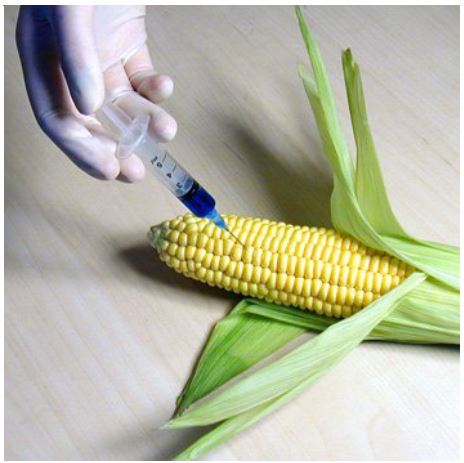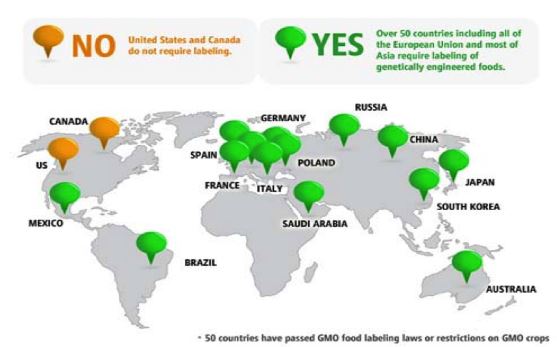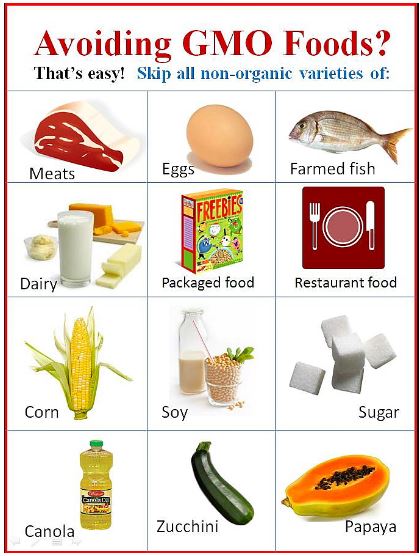The WEALTH of Information in Produce PLU Codes
First, a quick review on what a GMO is: Genetically Modified Organisms are plants or animals that have been genetically engineered with DNA from bacteria, viruses or other plants and animals. These experimental combinations of genes from different species cannot occur in nature or in traditional crossbreeding.

The commercial aim behind modifying crops, especially, is to end up with a product that can withstand direct application of herbicide and/or insecticide. Despite biotech industry promises, however, none of the GMO engineering to date can claim increased yield, drought tolerance, enhanced nutrition, or any other consumer benefit.
Meanwhile, a continually growing body of evidence connects GMOs with health problems, environmental damage, and violation of farmers’ and consumers’ rights.
But to you and me, the John Doe Consumer, the question is, “Are GMOs safe?” As always, that depends on who you talk to. The food manufacturing industry will swear up and down that they are. But most developed nations do not consider GMOs to be safe. In more than 60 countries around the world, including Australia, Japan, and all of the countries in the European Union, there are significant restrictions or outright bans on the production and sale of GMOs (in wise response to the clear and condemning results of all the research around these foods).
In the U.S., though, the government has approved GMOs (based on studies conducted by the same corporations that created them and profit from their sale). As a result, GMOs are in as much as 80% of conventional processed food. But also as a result of this outright dishonesty, Americans are increasingly taking matters into their own hands and choosing to opt out of the GMO experiment.
To help save America’s food supply and to help those that just don’t want to eat genetically modified food, the NonGMO Project was born (www.nongmoproject.org). They divide commercially grown food into two groups: HIGH RISK (genetic modification is going on):
- Alfalfa (first planting 2011)
- Canola (approx. 90% of U.S. crop)
- Corn (approx. 88% of U.S. crop in 2011)
- Cotton (approx. 90% of U.S. crop in 2011)
- Papaya (most of Hawaiian crop; approximately 988 acres)
- Soy (approx. 94% of U.S. crop in 2011)
- Sugar Beets (approx. 95% of U.S. crop in 2010)
- Zucchini and Yellow Summer Squash (approx. 25,000 acres)
MONITORED RISK (those for which suspected or known incidents of contamination have occurred, and those crops which have genetically modified relatives in commercial production with which cross-pollination is possible; we test regularly to assess risk, and move to “High-Risk” category for ongoing testing if we see contamination):
- Beta vulgaris (e.g., chard, table beets))
- Brassica napa (e.g., rutabaga, Siberian kale)
- Brassica rapa (e.g., bok choy, mizuna, Chinese cabbage, turnip, rapini, tatsoi)
- Cucurbita (acorn squash, delicata squash, patty pan)
- Flax
- Rice
- Wheat

Since the US and Canada do not require labeling of GMOs, we need to know the coding system for produce if we want to opt out. Once you know what these numbers mean, it’s easy to avoid GMOs. The numbers on the sticky labels affixed to produce are called PLU codes (Price Look-Up Number) and are standardized for every grocery store by the International Federation for Produce Standards. Here’s their system as found on plucodes.com:
- Conventionally grown fruits and veggies (the bulk of a standard grocery store’s produce department) have a 4-digit number that usually begins with a 3 or 4.
- Genetically Modified produce (GMO’s) all have 5 digits and begin with an 8.
- Organically grown produce has 5 digits and begins with a 9.

This consumer education poster created by Royal Hawaiian Orchards visually explains things well:

So, the next time you are in the produce section, you will be able to know exactly how your produce was grown—whether conventionally, genetically modified, or organically—and be able to make a better-informed decision!
And to conclude, if you’re curious, outside of produce (with the major produce offenders being corn, zucchini, and papaya), here are the sources of typical GMO food that we’re all running into everyday.

- www.anh-usa.org
- www.organicconnectmag.com
- www.holistic-nourishment.com
- www.royalhawaiianorchards.com
- www.bbbseed.com
 Alice Osborne
Alice Osborne
Weekly Newsletter Contributor since 2006
Email the author! alice@dvo.com
